Crackle effect with wax crayons. Fresco imitation
Hi friends!
I wrote this tutorial for the art community on Golos.
At one time, I experimented a lot with different art materials and therefore decided to share my ideas with other drawing lovers.
Few professional artists consider wax crayons as serious tools.
Of course, It is difficult to create a large painting canvas with their help, but they can help to realize original design ideas.
Like the one I'll tell you about in this tutorial
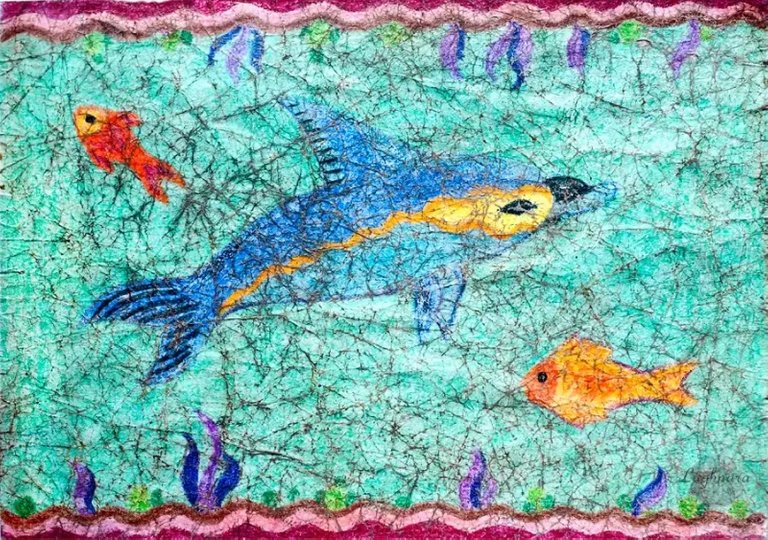
For work, I needed a set of colored wax crayons, a sheet of printer paper and poster (or art) gouache with synthetic brush.

The crackle or craquelure effect (from the French craquelure - "cracks") appeared many centuries ago. It was first used in practice by glass blowers on the Venetian island of Murano. It was they who began to decorate glass items with a network of small cracks, similar to frosty patterns. Much later, the crackle effect was adopted for the manufacture of ceramics.
Nowadays, it is a very fashionable technique for decorating handmade products by masters working in decoupage technique.
Many of us have probably seen (live in museums or on reproductions) old frescoes: colorful miniatures, cracked from time to time.
It is such a fresco, or rather an imitation of it, that we are going to create today.
I chose a fragment of Minoan painting - dolphins, as a reference
Create a sketch
I decided that the main character would be one dolphin plus two fish and border ornaments with algae above and below.
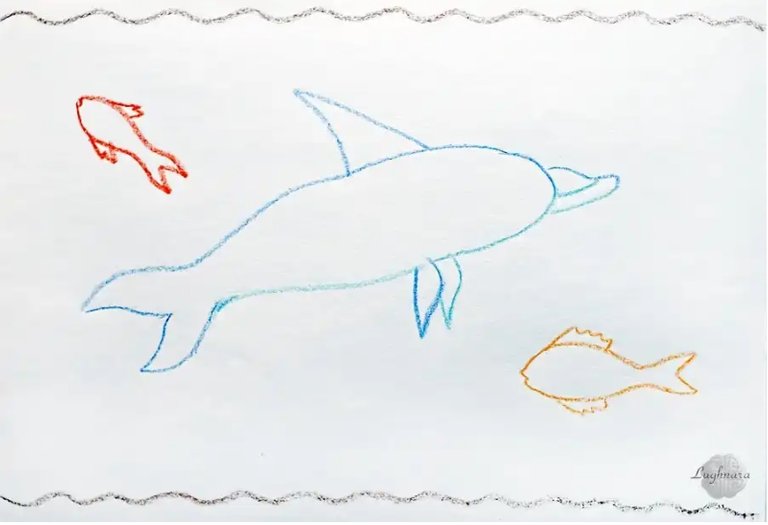
The objects should be large enough not to get "lost" in the finished work.
Matching colors. Something like this:
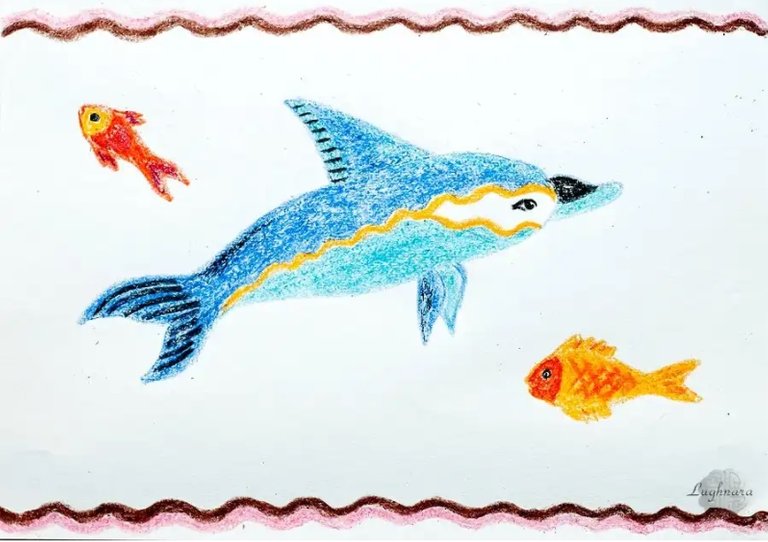
Paint over the background color too. Quite intense, preferably without gaps. At the last stage, you will understand why.

And colorful borders, of cause!

At this stage, do not rush, it is better to paint with short strokes.
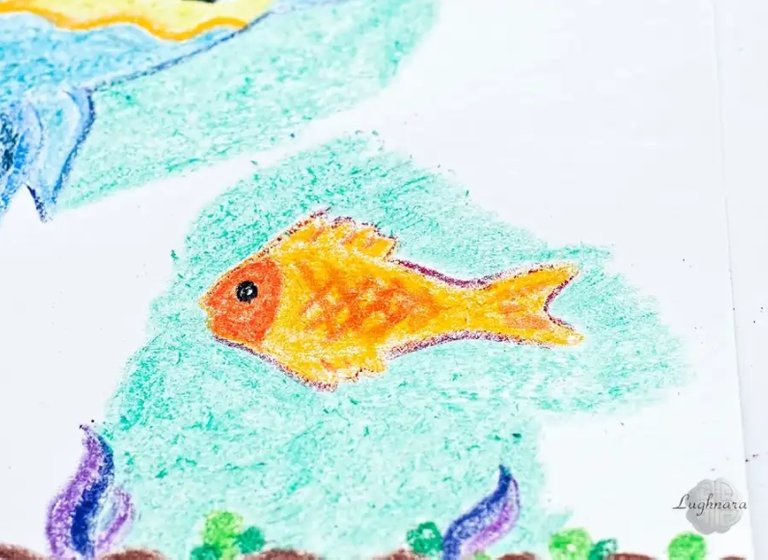
The result is such a piece of the sea, which was once painted on some (possibly ceramic) surface ...

... and which we will crackle now!
Very carefully, so as not to tear the picture, we begin to crease the paper sheet, starting from the edges. We crush thoroughly!
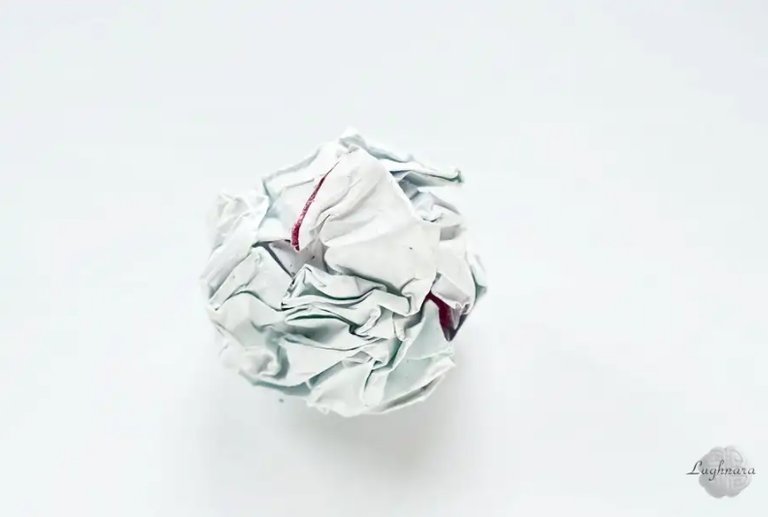
And now we take gouache, a synthetic brush and begin to paint over the picture thickly. I took the color of umber - not very dark and not very light.
Why exactly gouache?
This paint is opaque (as opposed to watercolors) and can be easily washed off with water without damaging the painted surface of the paper (as opposed to acrylic or tempera).
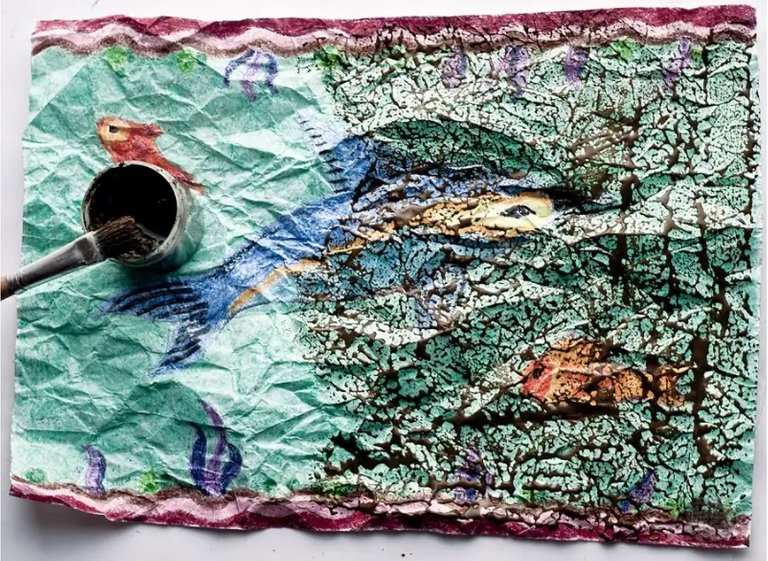
I painted over almost the entire picture, leaving only the fish eyes so that the cracks don't go through them.
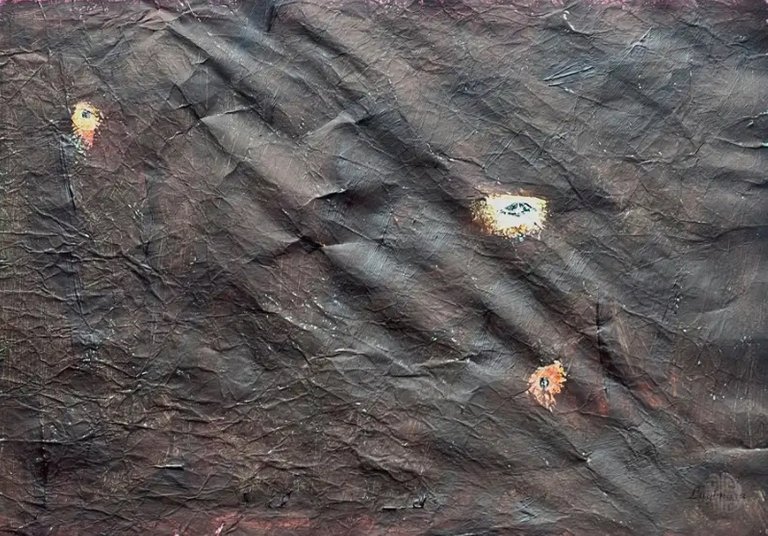
Finally, a moment of magic comes!
When the gouache layer is completely dry, rinse it off with water.
From personal experience, I will say that it is best to wet the picture and stick it evenly, without bubbles, with the back side on the bathroom wall and turn on the shower at a low pressure. If the paper is secured in this way, it will not tear, and the paint will be washed off without hindrance. But do not pour water for too long, otherwise the colored pieces of paper will begin to flake off and also wash off along with the paint.
Let the rest of the water drain completely, then remove the still wet picture and iron it with a weakly heated iron between two thick clean sheets of paper.
And here it is, a real old fresco with cracks!

I hope my English speaking friends from the Hive will also appreciate this artistic technique.
Thanks for your attention!
Regards
Gera
Electronic-terrorism, voice to skull and neuro monitoring on Hive and Steem. You can ignore this, but your going to wish you didnt soon. This is happening whether you believe it or not. https://ecency.com/fyrstikken/@fairandbalanced/i-am-the-only-motherfucker-on-the-internet-pointing-to-a-direct-source-for-voice-to-skull-electronic-terrorism
https://twitter.com/GerdanaNeis/status/1445089085308166149
The rewards earned on this comment will go directly to the person sharing the post on Twitter as long as they are registered with @poshtoken. Sign up at https://hiveposh.com.
Electronic-terrorism, voice to skull and neuro monitoring on Hive and Steem. You can ignore this, but your going to wish you didnt soon. This is happening whether you believe it or not. https://ecency.com/fyrstikken/@fairandbalanced/i-am-the-only-motherfucker-on-the-internet-pointing-to-a-direct-source-for-voice-to-skull-electronic-terrorism
Вот это да! Я такого ещё не встречала.
А, между прочим, я этот урок для сообщества VP-Painting на Голосе писала ;)
Как ж ты его проглядела?)))
Тогда я даже не знала что буду и сама рисовать :-) Даже живописью не интересовалась особо. Я ведь стала пробовать писать сама гораздо позже. Когда уже и то сообщество закрылось...
Yay! 🤗
Your content has been boosted with Ecency Points, by @daring-celt.
Use Ecency daily to boost your growth on platform!
Support Ecency
Vote for Proposal
Delegate HP and earn more